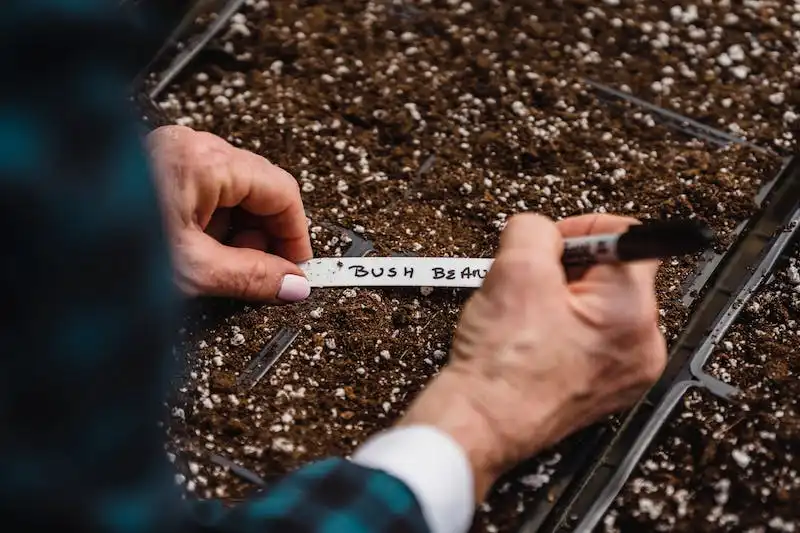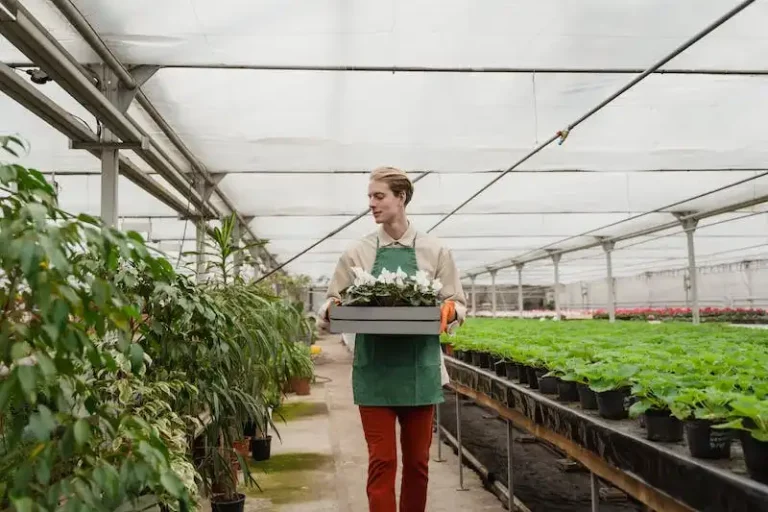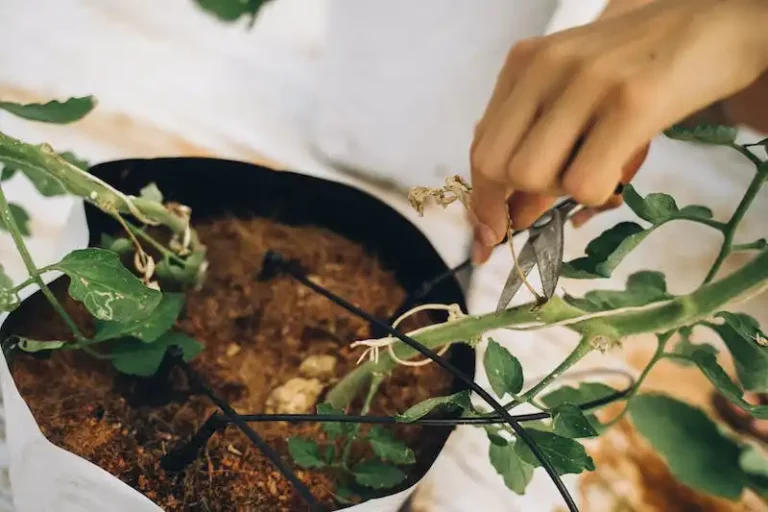Thinning out Redwood trees can be a challenging task, but it is essential for their overall health and longevity. Redwood trees are known for their impressive size and striking beauty, but when they become too dense, they can cause a variety of problems. Thinning out the canopy of a Redwood tree not only helps to improve its health, but it also allows more light and air to reach the lower branches and the ground below. In this article, we will explore when and how to thin out Redwood trees and the benefits it can bring to your garden or landscape.
One of the main reasons why Redwood trees need to be thinned out is to reduce the risk of diseases and pests. When the canopy is too dense, it creates a warm and humid environment that is favorable for the growth of harmful organisms. Thinning out the trees allows for better air circulation and sunlight penetration, which can help to prevent the spread of diseases and pests. Additionally, thinning out the trees can also reduce the risk of wind damage, as trees with dense canopies are more susceptible to being blown over during storms.
Another reason to thin out Redwood trees is to prevent excessive shading. When the canopy is too thick, it can block sunlight from reaching the ground and other plants underneath. This can result in poor growth and even death of the plants that rely on sunlight for photosynthesis. By thinning out the trees, you can create a more suitable environment for other plants to thrive.
The timing of thinning out Redwood trees is crucial. The best time to thin out these trees is during their dormant season, which is usually in late fall or winter. During this time, the trees are less likely to experience stress, and the cuts made in the branches are less likely to attract insects or diseases. It is also easier to see the tree’s overall form without its leaves during the dormant season, making it easier to decide which branches to remove. Thinning out Redwood trees during the dormant season also allows for the removal of any potentially dangerous branches that may be overhanging roofs, sidewalks, or structures.
If you are unsure about how to safely thin out your Redwood trees, it is best to consult a professional arborist. They have the experience and knowledge to determine the specific needs of the tree and guide you through the thinning process. Additionally, arborists can also identify and remove any invasive or problematic species that may be present in your Redwood tree.
In conclusion, thinning out Redwood trees is an important aspect of their care and maintenance. By reducing the density of their canopies, you can improve their overall health, reduce the risk of diseases and pests, and create a more suitable environment for other plants to thrive. Remember to consider the timing of thinning out the trees and seek professional assistance if needed. With proper care and attention, your Redwood trees can continue to be a beautiful and beneficial addition to your garden or landscape.
Trees reducing their size safely
When it comes to reducing the size of trees, especially larger ones like redwood trees, it is important to prioritize safety. Arborists, often referred to as tree keepers, have a special set of skills and knowledge to safely thin out trees.
Before thinning out a tree, arborists must carefully assess the conditions of the tree and its surroundings. They consider factors such as the health of the tree, the presence of any diseases or pests, and the structural integrity of the branches.
Thinning out a tree involves making selective cuts to remove certain branches in order to improve the tree’s health, reduce risk, and enhance its aesthetic appearance. Arborists often employ techniques such as lions-tailing, where the lower branches are removed to brighten up the lower part of the tree and improve visibility.
One must be cautious when thinning out trees, as making improper cuts can lead to problems. Arborists must know how to properly access the tree and avoid damaging the bark or causing unnecessary stress. They also need to consider the timing of the thinning, as some trees, like redwoods, are best thinned during their dormant phase.
Thinning out trees can also be a difficult and time-consuming task. It often involves the use of special equipment such as chainsaws and may require the assistance of additional personnel. In some cases, the thinning process may create a significant amount of waste, including branches and slash. This waste should be properly disposed of or used for other purposes, such as mulch.
For gardeners and homeowners looking to thin out their trees, it is important to consult with an arborist or tree care professional. They can assess the specific needs of your tree and provide guidance on the best course of action. Thinning out trees should always be done with safety and the overall health of the tree in mind.
In conclusion, thinning out trees can be a complex and challenging task. Arborists have the expertise and experience to safely reduce the size of trees, including the majestic redwood. By following proper techniques and considering factors such as timing and tree health, trees can be safely thinned out without causing harm or damage to the tree or its surroundings.+
Jump to
Here you can quickly jump to different sections in this article to learn more about thinning out Redwood trees.
Suitable for
Thinning out redwood trees is a task that should be done safely and carefully to ensure the health and longevity of the trees. The process involves removing a portion of the tree’s branches and foliage, which can help reduce the overall size of the tree and bring more light and air into the crown.
Thinning out redwood trees is beneficial for various needs, including:
| • Improving the tree’s form and structure | • Reducing the risk of wind damage |
| • Preventing problems with invasive plants | • Creating a better environment for other plants and gardeners |
| • Providing suitable shade for livestock grazing | • Allowing for the growth and health of other trees in the area |
| • Increasing the aesthetic appeal of gardens and landscapes | • Reducing the risk of damage to sidewalks and other nearby structures |
Timing is crucial when it comes to thinning out redwood trees. The best time to thin a redwood tree is in late winter or early spring when the tree is dormant. Thinning during this time helps to minimize stress on the tree and allows it to heal faster.
To determine how much to thin, arborists and gardeners often use the “lions-tailing” technique. This involves selectively thinning out the lower limbs of the tree while keeping the upper portion full. The goal is to maintain a natural and healthy canopy.
Thinning out smaller redwood trees can usually be accomplished by a knowledgeable gardener, while larger trees may require the expertise of a professional arborist. When in doubt, it’s always better to consult an expert, especially if you’re unsure of how to safely thin out the tree without causing damage or promoting weak growth.
Remember, thinning out redwood trees is an ongoing process, and it needs to be done in a way that promotes the overall health and vigor of the tree. Proper thinning can help improve the tree’s structure, allow for better light penetration, and reduce the risk of wind damage. By understanding the specific needs of your redwood tree and following the appropriate thinning techniques, you can keep your tree in good shape and enjoy its beauty for years to come.
Thinning out your redwood tree is a special responsibility, and it requires careful planning and consideration. Thanks to the tips provided in this guide, you can confidently decide when and how to thin out your redwood tree based on your specific needs and goals.
When to reduce trees
If you have a redwood tree in your garden and it has grown too large, you may need to reduce its size by thinning out certain portions. Thinning out refers to selectively removing branches and limbs to reduce the tree’s overall mass. This process can help maintain the health and safety of the tree, as well as improve access to light and wind.
When it comes to reducing trees, timing is crucial. The best time to thin out redwood trees is during the dormant season, typically in late winter or early spring. During this time, the tree is less likely to be actively growing, making it easier and safer to perform the necessary cuts. Thinning out during the dormant season also minimizes the risk of interfering with the tree’s natural processes.
Thinning out a redwood tree involves removing specific branches or limbs that are causing issues. For example, if the tree’s canopy is too thick and casts too much shade over your garden or larger sidewalks, thinning out the tree can help brighten up the area and provide better access to sunlight. Thinning out can also prevent the branches from becoming entangled in utility lines or close to the house or roof, reducing the risk of damage during windstorms or wildfire.
One specific thinning technique is called “lionstailing,” which involves removing inner limbs and foliage, leaving behind long, thin limbs with foliage at the end. This technique is not recommended, as it can cause health problems for the tree, such as sunburn on the bark and weakened branches due to the excessive removal of foliage. Instead, it is best to remove whole branches or limbs that are crossing or rubbing against each other, growing towards the center of the tree, or showing signs of disease or damage.
If you’re unsure whether your redwood tree needs thinning, it’s a good idea to consult with a professional arborist. They can assess the tree’s health and determine whether thinning is necessary or if other forms of tree care or renovation are more suitable. Arborists can guide you through the process and provide specific recommendations based on the conditions and needs of your tree.
Thinning out redwood trees can be a challenging task, especially if you’re not experienced with tree care. It’s important to prioritize safety and avoid attempting any tree-related work that you’re not comfortable or qualified to do. Tree thinning and other extensive work are best left to trained professionals who can safely carry out the necessary cuts and ensure the health and longevity of the tree.
In summary, knowing when to reduce trees, particularly redwood trees, is essential for their overall health and safety. Timing is crucial, with the dormant season being the most operative time for thinning out. Remember, when it comes to tree care, it’s always wise to consult with a professional arborist to guide you and ensure the best possible outcomes for your trees and gardens.
Thanks to arboristsite for the information and tips provided within this guide.




